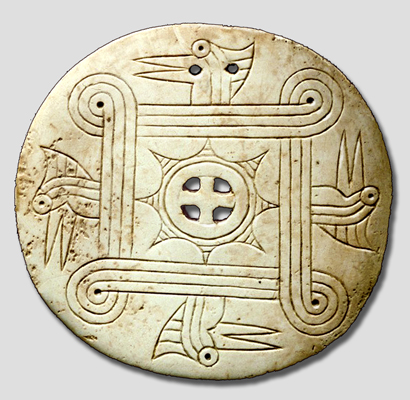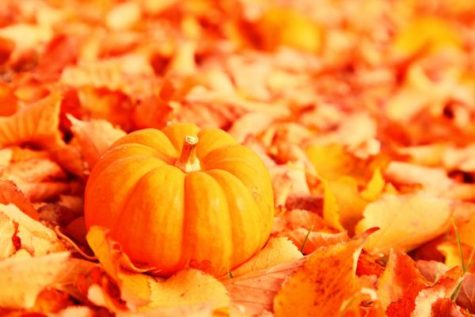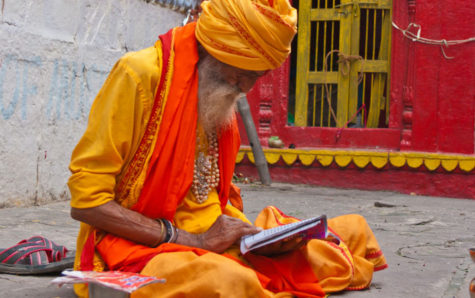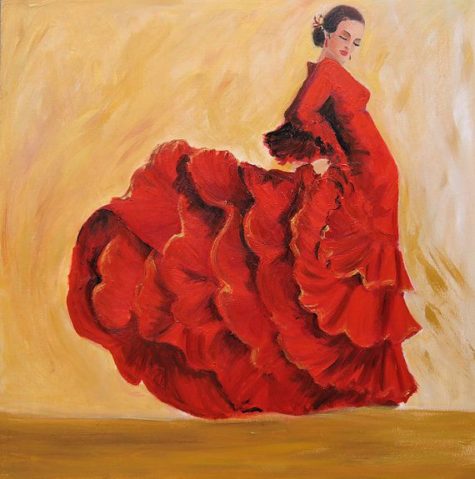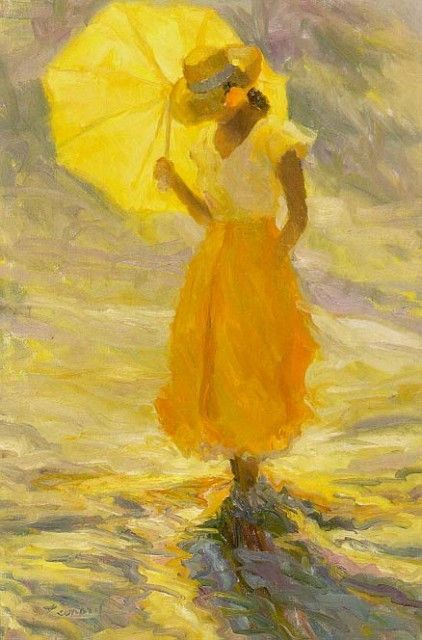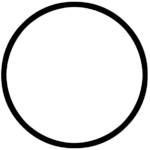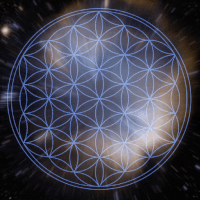Sun
The Cox Mound Gorget
The Cox Mound, or Woodpecker, gorget style is a particularly beautiful and enduring symbol of Tennessee’s prehistoric inhabitants. A gorget was a pendant, or personal adornment, worn around the neck as a badge of rank or insignia of status and was thought to be symbolic of both earthly and supernatural powers. A variety of gorget styles, or designs, are known. As a class of artistic expression, this type of artifact falls within the Southeastern Ceremonial Complex, formerly known as the Southern Cult.
Just over thirty Cox Mound-style gorgets have been found since the late nineteenth century, primarily from prehistoric Mississippian stone box graves and villages along the lower Tennessee, Cumberland, Duck, Harpeth, and Buffalo Rivers of Middle Tennessee, and the middle Tennessee River valley of northern Alabama. As a result of the frequent mortuary association of Cox Mound gorgets with certain pottery types, namely Matthews Incised, as well as other artifacts, it has been postulated that Cox Mound gorgets date to the period A.D. 1250-1450. One rich grave from the famous burial mound at the Castalian Springs site in Sumner County produced two Cox Mound gorgets.
Typically, Cox Mound gorgets were manufactured on exotic marine shell and were white in color. Other materials, such as black slate in Putnam County and human skull fragments in Hardin County, were used rarely. Engraving the intricate design on the hard shell or slate without metal tools took many hours of skilled labor and is thought to have been a winter activity.
A Cox Mound gorget has three important iconographic elements. In the center is a cross inside a rayed circle or sun motif. The cross is symbolic of the sacred, or council, fire. The sun represents the sky deity and/or mythical ancestors. Surrounding the cross and sun is a scroll-like design element known as the looped square. This feature may represent wind, or possibly the litter on which subordinates carried a chief.
Typically the looped square is composed of four lines, but in some cases only three lines are used. Four crested bird heads, which most scholars interpret as woodpeckers, are found on the outer edge. The woodpecker heads always are oriented in a counterclockwise direction, suggestive of the prehistoric Native American swastika.
The woodpecker, like the falcon, was probably a symbol of war to the prehistoric Mississippian Indians. The war symbolism of the bird probably derived from the red head of the bird, which resembled a bloodied scalping victim. The Cherokees associated the red-headed woodpecker with danger and war, and the woodpecker was always invoked for aid by the ball game players. The bird’s pecking is similar to an Indian warrior striking the war post at the Victory dance. For the Cherokees, the color red is associated with male attractiveness and fertility, as well as bravery and war. Groups of woodpeckers are thought to be a sign of war to the Creeks and Seminoles. While war is typically associated with males in Native American society, it is important to note that Cox Mound gorgets have been found in both male and female burials.
Other interpretations include the identification of the four woodpeckers as the four thunders at the world quarters, and a folklorist has speculated recently that the Cox Mound gorget style is a prehistoric expression of the Yuchi myth of the Winds. Cox Mound gorgets are displayed by the Tennessee State Museum and Pinson Mounds State Archaeological Area.
Source: Tennessee Encyclopedia
Brighids Cross
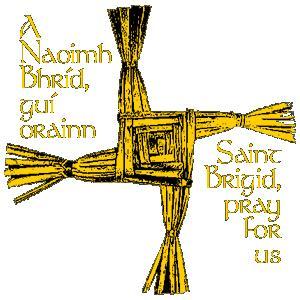 Corn dollies are frequently constructed in the shape of Brighids Cross, and although the symbol itself predates Christianity, it was given the name of the saint in order to ease the passage of acceptance of the new religion.
Corn dollies are frequently constructed in the shape of Brighids Cross, and although the symbol itself predates Christianity, it was given the name of the saint in order to ease the passage of acceptance of the new religion.
The symbol is reminiscent of the ancient Sun symbol, the swastika, its four arms pointing to the cardinal points of the compass. They also represent the Elements, with the point at the center indicating the fifth element of quintessence.
From: Encyclopedia of Secret Signs and Symbols
Orange
 The Symbolic Meanings of the Color Orange:
The Symbolic Meanings of the Color Orange:
- Balance between spirit and sexuality
- Fertility and yet virginity
- Energy
- The Sun
- Like yellow, orange is believed to be an appetite stimulant
While orange is a common color associated with summer and the hot sun, often associated with being a main color of harvest and autumn due to the changing color of the leaves and pumpkins. When used alongside the color black, orange brings up associations with Halloween. With the change in color of the autumn leaves, orange often represents the changing seasons. Because of it’s association with change, orange is often used as a transitional color or to represent a transition or change of some kind.
Orange has two aspects that we see time and time again, pivoting between the material and spiritual worlds, which is not surprising given that the color itself is a balance between red and yellow. As such, it represents the second chakra, the first being red, and the third, yellow.
Orange is a vibrant, cheerful color that definitely lifts the spirits. The orange blossom is the traditional flower for brides because the fruit and the flower can appear on the orange tree at the same time, hence the virginity / fertility symbolism.
Similarly a Hindu bride has an orange powder smeared on her forehead once she is married, a sign of her status. Hindu places of worship are indicated by an orange flag or banner, which is replaced once a year in a colorful and effusive ceremony.
The color orange is closely associated with the Netherlands originally because of the Dutch ruling dynasty, the House of Orange. Dutch farmers who gave the world the first orange carrot further cemented the association. It might be impossible to associate the carrot with any other color these days but originally they came in black, red, or purple and were a much more bitter vegetable than the modern varieties. By the 1700’s, the Dutch had succeeded in hybridizing pale yellow carrots with red ones. It might be a coincidence, but a recent UNICEF survey showed Dutch children to be the happiest in Europe; given that happiness is one of the symbolic associations with the color orange, could there be a link?
Orange associations with other colors:
- Orange and blue work well together because they are complimentary colors. The orange and blue color palettes are commonly used for representations of play and summer fun, depicting both the hot, summer sun and the cool, refreshing water.
- Orange when combined with yellow conjures up feelings of heat and fire, as well as fresh fruit.
- When combined with the color green, the colors elicit feelings of adventure and tropical destinations.
Collected from various sources
Saffron
Symbolic Meanings of the Color Saffron:
- Spirituality
- Holiness
- Good Fortune
This color is named for the saffron crocuses whose stigmata create the color. The harvesting of these delicate plant parts is a labor-intensive and time-critical matter and so the actual dye is costly to produce. Saffron is an extremely auspicious color for Buddhists, Hindus, Jains, and Sikhs. A saffron or orange banner indicates a place of spiritual worship.
The foreheads of Hindu deities are daubed with saffron paste to denote their celestial status, and although the Hindu pantheon is vast and complex, the use of saffron is a unifying factor across the many different manifestations of the faith.
Saffron is paler and more golden than true orange, and is said to be the color of wisdom, the rising Sun, and of Mother Earth.
Source: The Element Encyclopedia of Secret Signs and Symbols
Red
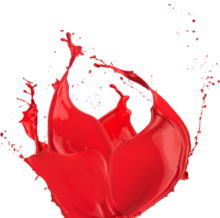 Symbolic Meanings of the Color Red:
Symbolic Meanings of the Color Red:
- Vitality and Life Force
- Fire
- The Sun
- The South
- Blood
- Good Luck and Prosperity
- Power and Authority
- Masculine Energy
- War and Anger
- Passion
- Energy
- Sexuality
One of the three primary colors, bright red pops out of whatever environment it happens to be in and grabs our attention more than any other color. Moreover, it is the first actual color that is seen by babies.
Because it has a lower vibrational frequency than any other color in our visible spectrum, it is associated with the Root Chakra and symbolizes passion, sexuality, fertility and animal urges. Red-light districts are so called because of the dim red shades of the prostitutes’ quarters.
Red is the color of blood, which means that it is associated with the life-forces and vitality. Hunters would daub themselves in the red blood of the kill, which they believed would give them empathy with the spirit of the animal. Red is also the color of fire, the Sun and the Southern direction.
The word for “magic,” in German is directly linked to the word for “red ochre.” A recent archaeological discovery provided unusual evidence of the reverence in which the color was held by early man. Lumps of red ochre, as well as tools stained with the substance, were found in early graves in an Israeli cave, indicating its importance as a symbol of vitality, life, and resurrection.
Pure colors used to be very difficult and expensive to produce, and so red cloth was used by people in positions of power, such as the monarchy and the clergy. Byzantine emperors were dressed from head to food in red. In Rome, red was the color of nobles and generals, and the Holy Roman Church still dresses its cardinals in pure, bright, cardinal red. To roll out the red carpet for someone is to honor their presence.
Red is the color of protection and has been viewed as such for at least the last 2000 years. Amulets made from rubies or garnets were far more valuable than any other kind, able to make the wearer invincible.
 And then there is the red planet. Mars has a preponderance of iron oxide in its soil that gives it a red appearance that is clearly visible to the naked eye. This color is partially responsible for its association with war and warriors.
And then there is the red planet. Mars has a preponderance of iron oxide in its soil that gives it a red appearance that is clearly visible to the naked eye. This color is partially responsible for its association with war and warriors.
In India and China, red is the traditional color for weddings. Indian brides wear saris of red or pink, and the Chinese happy couple will be surrounded by a veritable sea of red, clothing, souvenirs, and gifts. Even the home of the bride and groom are decorated with red banners and ribbons. Roman brides, too, favored red for their wedding veil, which was called a flammeum. This tradition is shared by modern Greek brides.
The red envelope is a popular Chinese symbol for happiness. It has been a long-standing belief that red envelopes bring happiness, good luck and prosperity. In fact the color red stands for all these, in itself. So the person gifting these wishes the person receiving it to be bestowed with all these things.
By contrast, red is the color worn by mourners in South Africa. Red was also the color of the communist revolution in Russia, and so politically it is associated with communist causes.
In Ancient Egypt red was synonymous with evil, because it was the color of the God Seth, who haunted the arid desert places, the personification of destruction. Seth was called the “Red God,” and an Egyptian charm of the time goes like this:
Oh, Isis, deliver me from the hands of bad, evil, red things!
Similarly, in Christian symbolism, the Devil is sometimes depicted as a red creature. Like Seth, he also has a predilection for scorched places.
In alchemy, the Red Stone is mercuric sulfide, a compound of sulfur and mercury that is also called vermilion. The creation of vermilion was a very important primary stage in the process of making the Philosopher’s Stone, which is itself disguised as the Red Lion, since this elusive substance was characterized by turning red in its final stage.
Other meanings associated with the color red:
- When the color green and the color red are combined, they traditionally represent Christmas and the joyous holiday season.
- Red is often associated with the fortieth wedding anniversary, as the red ruby is the traditional fortieth wedding anniversary gift.
- Barns and large structures have been traditionally painted red because the red paint was the most inexpensive paint to purchase and the easiest paint to manufacture.
- A red rose without thorns is a symbol of passion, love, and romance.
- A red rose with thorns typically exemplifies the struggle and challenges associated with journey of love, meaning that it can be both joyous, fulfilling and delicate, as well as painful and cruel.
- The saying “in the red” means losing money, no money, or overdrawing your account at the bank and is thought to come from the feelings of stress and anxiousness and the physical symptoms they cause such as elevated blood pressure and often anger or danger.
- The term “red herring” is used when referencing something that is deceiving, dishonest, or distracting from the truth.
- The phrase “paint the town red” is associated with celebration, partying, abandon, fun, and excitement.
- The expression “seeing red” is thought to be based on the physical characteristic of anger, including redness of the cheeks, physical exertion, and elevated blood pressure.
- The term “red eye” is associated with overnight airline flights due to the perceived lack of sleep passengers receive and the appearance of red in the whites of their eyes as a result.
- The saying “red carpet treatment” refers to making someone feel special and pampered as if they are a VIP or high profile person.
- The phrase “red flag” is often used in reference to a warning of danger, problems, fighting, and war.
Collected from various sources.
Yellow
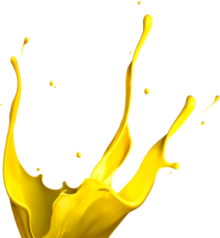 Symbolic Meanings of the Color Yellow
Symbolic Meanings of the Color Yellow
- The Sun
- Power
- Authority
- The Intellect and Intuition
- Goodness
- Light
- Life
- Truth
- Immortality
- Endurance
- The Empire and Fertility (China)
- Cowardice
- Treachery
Yellow is one of the three primary colors and is related to the Solar Plexus Chakra. This is apt, since yellow, like red and orange, is one of the Sun colors. It could be argued that yellow is the most dazzling of the three, so the association makes good sense.
The Ancient Egyptians had only six colors available in their pallet, and wherever yellow is used this indicates the ability to endure and timelessness.
In China, yellow is the color of the Emperor. The average man in the street was forbidden from wearing it until relatively recently. It is also the color of fertility, since healthy soil in China is a yellow color. Because of this, all the hangings, sheets, and pillows of the bridal bed were dyed in vibrant shades of yellow as well as red.
However, there are some contradictions with yellow. In the UK and USA, to call someone “yellow” or to say that they have a “yellow streak” means that they are cowardly. There are several theories about why this should be. The one that seems to fit best is that Judas Iscariot was said to have worn yellow robes, and his own cowardly act was to betray Christ for thirty pieces of silver.
Jewish people were made to wear a yellow Star of David during the Nazi regime of the Second World War. Similarly, in 1215 the Lateran Council ordered Jews to wear a yellow circle to identify themselves. It was probably small comfort for these persecuted people that they believed yellow to be synonymous with beauty.
In 10th century France, the doors of criminals were painted yellow. Conversely, in the 14th century, the yellow chrysanthemum was worn by warriors as a symbol of courage.
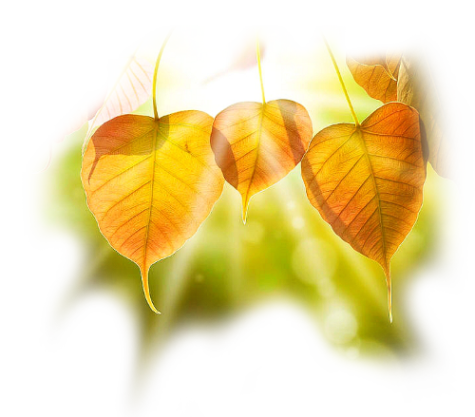 Because leaves turn yellow and then to black with the onset of fall, in several places, including Ancient Egypt, yellow is a color of mourning. A yellow cross was painted on doors as a sign of the plague, possibly for the same reasons, and even today yellow marks off a quarantined area.
Because leaves turn yellow and then to black with the onset of fall, in several places, including Ancient Egypt, yellow is a color of mourning. A yellow cross was painted on doors as a sign of the plague, possibly for the same reasons, and even today yellow marks off a quarantined area.
Color Yellow Meanings in the Bible:
- Refers to God’s glory (Ezekiel 1:4)
- Brightness of Christ (Revelation 21:23)
- Yellow can also refer to God’s fire (Hebrew’s 12:29) or judgment (Genesis 19:24)
- Yellow is also used to describe the color of gold (Psalm 68:13).
Other meanings associated with the color yellow:
- Traditionally, yellow ribbons were worn as a sign of hope as women waited for their men to come home from war.
- Today, yellow ribbons are still used to welcome homes loved ones.
- Calling someone “yellow” or “yellow-bellied” is the same as calling them a coward.
- The term “mellow yellow” stands for laid and relaxation.
- The phrase “yellow journalism” is in reference to bad or irresponsible reporting.
- In some cultures, yellow represents peace.
- In Egypt yellow was worn to signify the dead.
- In Japan, yellow stands for courage.
- In India, yellow is the color of the merchants.
Collected from various sources.
The Circle
… the power of the world always works in circles …
~Black Elk
Effectively an expansion of the dot, the circle represents the spirit and the cosmos. Further, the circle itself is constructed from “some thing” (the unbroken line) and “no thing” (the space inside and outside this line). Therefore the circle unifies spirit and matter. The structure itself has great strength – think of the cylindrical shape of a lighthouse, built that way in order to withstand the fiercest attack by a stormy sea.
The physical and spiritual strength of this symbol are there because the perfect circle has no beginning and no end; it is unassailable. This power is why the circle is used in magickal practices such as spell-casting. The magick circle creates a fortress of psychic protection, a physical and spiritual safe haven where unwanted or uninvited entities cannot enter.
Hermes Trismegistus said of the circle:
God is a circle whose center is everywhere
and circumference is nowhere.
Where would ancient man have seen the most important circles? Obviously, in the Sun and the Moon. As the Sun, the circle is masculine, but when it is the Moon, it is feminine. Because the passage of time is marked by the journey of the Sun, Moon and stars in orbit around our Earth, the circle is a symbol of the passage of time. In this form, it commonly appears as the wheel.
Because the circle has no divisions and no sides, it is also a symbol of equality. King Arthur’s Round Table was the perfect piece of furniture for the fellowship of Knights who were each as important as each other. Similarly, the Dalai Lama has a “circular” Council.
Source: Encyclopedia of Secret Signs and Symbols
